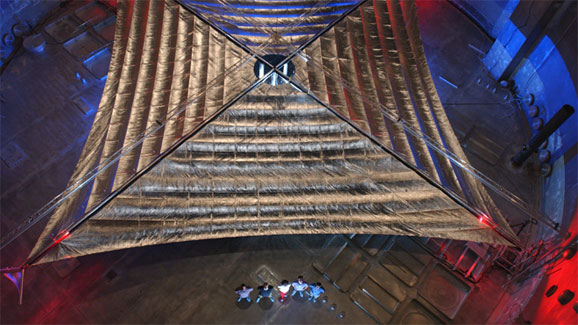Arthur Clarke’s DNA Spacebound
This article is more than 2 years old
 Arthur Clarke’s dreams of going to space didn’t die when he did. And in 2014, they’re going to come true. Better late than never, right?
Arthur Clarke’s dreams of going to space didn’t die when he did. And in 2014, they’re going to come true. Better late than never, right?
NASA plans to send Clarke’s DNA on the solar-powered Sunjammer spacecraft, which in November 2014 will launch on a 1.9-million-mile voyage to the sun.
The Sunjammer Cosmic Archive is a flying time capsule that carries blueprints for human genetic codes. In addition to Clarke’s DNA, the Sunjammer will carry DNA of Star Trek creator Gene Roddenberry and his wife Majel, who also acted on Star Trek, as well as James “Scotty” Doohan. Clarke, who penned such seminal sci-fi works as 2001: A Space Odyssey, Childhood’s End, and Rendezvous with Rama, also came up with the name Sunjammer—it was the title of one of his short stories.
Celestis, NASA’s Houston-based partner in the $27 million Sunjammer project, has made a business over the last 16 years of putting cremated remains into orbit. The 2014 Sunjammer flight will be the first Celestis operation to reach deep space.
The archive carried by the Sunjammer will house DNA in a “BioFile” and will also include “MindFiles” comprised of earthling pictures, music, and other recordings to make an archive for future generations—or for aliens. No specifics about the actual contents of those files have been released, so it’s impossible to know which details of human life extra-terrestrials may laugh (or cry) over, but I think it’s fair to assume that even they would shake their heads at the latest bit of celebrity ridiculousness.
Stephen Eisele, vice president of Space Services Inc., a NASA contractor for Sunjammer, says that the broader goal of the project is to “enable all of us to go to outer space.” NASA’s mission manager, Ron Unger, calls the project “game changing technology” that could pave the way for a new approach to space travel.
The Sunjammer, which is roughly the size of a dishwasher, will be released into space from a Falcon rocket once it’s nearly a million miles from earth. It will then deploy advanced solar sail technology that uses radiation pressure from gasses emitted by the sun to propel itself. It will “morph — much like a butterfly – into a Space Shuttle-sized ship capable of maneuvering solely by riding the photonic pressure of the Sun,” says Nathan Barnes, president of Sunjammer team leader L’Garde Inc. These technologies are relatively low-cost and can operate for long periods of time. They’re also relatively uncomplicated to power and could be reused for different missions.
Clarke first got the idea of sending his DNA into outer space back in 1999 for the Team Encounter project. He gave a single strand of hair, saying, “I’d give you more, but I don’t have anything to spare.” Team Encounter, who sent the sample out on a brief suborbital space journey back in 2007, has hung on to Clarke’s DNA ever since.
The idea, though, is much older than that. Back in 1610, Johannes Kepler wrote a letter to Galileo suggesting harnessing sunlight to power spacecraft. “There will be some who will brave even that void,” Kepler wrote in a letter. Kepler, Galileo, and Clarke would all approve of the Sunjammer. And the rest of us, especially those of us who sorely miss Clarke’s work and insight, can daydream about the possibility that some kind of advanced alien civilization could reconstruct Clarke’s genetic code.
Even Clarke himself entertained such thoughts. In a note with the DNA sample he provided, Clarke wrote, “Farewell, my clone.”












